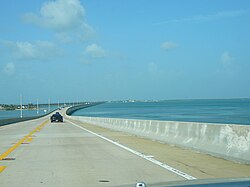Apples have a rounded shape with a depression at the top where the stem is attached. Some apples are almost perfectly round, while others are more rounded at the top and narrower at the bottom. In addition, some have knobby lobes at the calyx end (bottom) of the fruit. Apple fruits are firm and the skin is shiny and smooth. The color of the skin can be red, green, yellow, or a combination of those colors. The flesh is white or ivory.
A small-scale study funded by the apple industry claims that an apple a day can, indeed, keep the cardiologist at bay.
Published in the Journal of Functional Foods, the research found that healthy, middle-aged adults who ate one apple every day for four weeks succeeded in lowering levels of ‘bad’ cholesterol by 40 percent -- a substance which has been linked to the hardening of the arteries.
To carry out their study, researchers from Ohio State University recruited 16 healthy adults between the ages of 40 and 60 who weren’t regular apple eaters – less than twice a month. Participants were instructed to eat either a Red or a Golden Delicious apple every day for four weeks.
Another 17 participants took oral capsules containing 194 mg of polyphenols for four weeks, and a third group of 18 people took a placebo.
While the polyphenol capsules also yielded measurable results, they weren’t as strong as consuming whole apples, researchers said.
“That could either be because there are other things in the apple that could contribute to the effect, or, in some cases, these bioactive compounds seem to get absorbed better when they're consumed in foods,” hypothesized lead researcher Robert DiSilvestro.
When oxidized LDL or low-density lipoprotein --also known as ‘bad cholesterol’ -- oxidizes after meeting free radicals, the cholesterol is more likely to promote inflammation and cause tissue damage, researchers explain.
DiSilvestro also claims that eating whole apples daily was found to be more effective in this particular capacity -- lowering bad cholesterol levels -- than other antioxidant-rich foods he’s studied separately, including turmeric, green tea and tomato extract.
 The latest study builds on previous research vaunting the health benefits of apples. A Florida State University study likewise proved that eating an apple daily lowered ‘bad cholesterol’ levels by 23 percent while also increasing good cholesterol levels by 4 percent. Female participants also lost an average of 1.5 kg (3.3 lbs) during the year-long experiment.
The latest study builds on previous research vaunting the health benefits of apples. A Florida State University study likewise proved that eating an apple daily lowered ‘bad cholesterol’ levels by 23 percent while also increasing good cholesterol levels by 4 percent. Female participants also lost an average of 1.5 kg (3.3 lbs) during the year-long experiment.
IMAGE: Google




